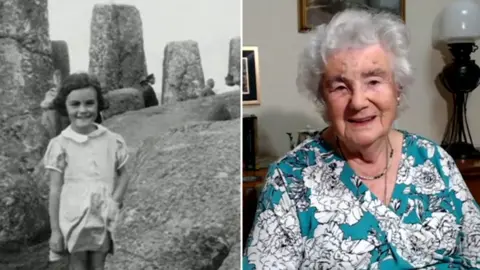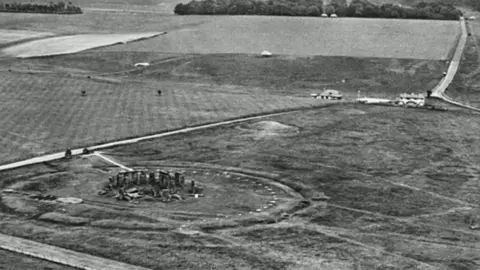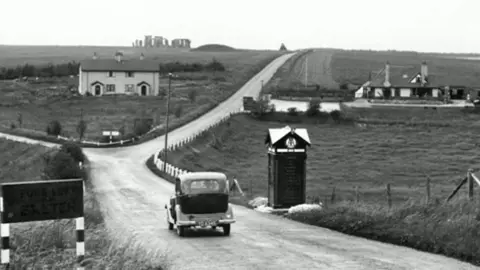Stonehenge was my playground in 1930s, says then caretaker's daughter
 BBC
BBCA 91-year-old woman whose father was the sole custodian at Stonehenge in the 1930s has described the ancient monument as her "playground".
Jean Grey, who lives in Australia, grew up among the stones from the age of five thanks to her father Jon Moffat.
As part of an English Heritage project, she has shared her memories of living at the cottage at Stonehenge Bottom.
She said: "The stones were my playground but it was rather lonely because there were no neighbours."
Ms Grey, who now lives in Melbourne, moved to the cottage close to the stones with her father, mother and younger brother in 1934.
"Dad was the custodian of the stones. He cut the grass and maintained the area round the huge monoliths and made sure no-one damaged them," she said.
"He had a little sentry box which was his office and people had to buy a token, which they then put in the turnstile which let them on to the site."

But Ms Grey said "in those days there weren't so many visitors" just the occasional school group for a guided tour or someone "wealthy enough to have their own transport".
"Most of the time it was a quiet, safe place for me to play around the stones. No neighbours. No other children," she said.
"The stones were my playground. They were just there and I took them for granted."

The isolated cottage, which was demolished in 1938 to clear the historic landscape, had no gas, no electricity, no rubbish collection and only an outside earth toilet.
But Ms Grey said her parents "really took to living at the stones" for those four years, despite both being "towns people".
"My father would shoot rabbits and I remember going out to collect baskets of cowslips to make wine and in the autumn we'd go mushrooming," she said.
"Even now, 70 years later, Stonehenge has a lasting place in my memory - the summer days and the skylarks."
Susan Greaney, of English Heritage, said: "People have been visiting Stonehenge for centuries, but there's not very many people who can say they lived there - it must have been an amazing place to grow up.
"We're really pleased to now be able to tell the story of someone who did."
The Your Stonehenge exhibition runs until August 2022.
